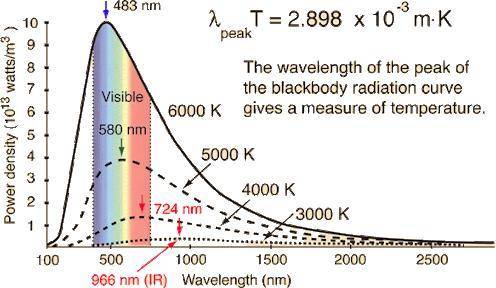
Two stars, both of which behave like ideal blackbodies, radiate the same total energy per second. The cooler one has a surface temperature T and 3.0 times the diameter of the hotter star.
(a) What is the temperature of the hotter star in terms of T?
(b) What is the ratio of the peak-intensity wavelength of the hot star to the peak-intensity wavelength of the cool star?

Answers: 1


Other questions on the subject: Physics

Physics, 21.06.2019 18:40, JellalFernandes
An observer that stands still as the electron moves by him, will observe
Answers: 3

Physics, 22.06.2019 04:30, tinytoonjr8052
Light from the sun reaches the earth in 8.3 minutes. the velocity is 3.00 x 10^8 m/s. how far is earth from the sun? i know how to get to d = (3 x 10^8 m/s)(498 sec). i just don't know how to get from there to the answer being 1.5 x 10^11 m.
Answers: 3

Physics, 22.06.2019 10:00, Calirose
Suppose a wheel with a tire mounted on it is rotating at the constant rate of 2.15 times a second. a tack is stuck in the tire at a distance of 0.373 m from the rotation axis. noting that for every rotation the tack travels one circumference (a) find the tack's tangential speed. (b) what is the tacks radial acceleration?
Answers: 2

Physics, 22.06.2019 10:50, dontcareanyonemo
The temperature at a point (x, y) is t(x, y), measured in degrees celsius. a bug crawls so that its position after t seconds is given by x = 6 + t , y = 8 + 1 3 t, where x and y are measured in centimeters. the temperature function satisfies tx(3, 9) = 5 and ty(3, 9) = 4. how fast is the temperature rising on the bug's path after 3 seconds? (round your answer to two decimal places.)
Answers: 3
You know the right answer?
Two stars, both of which behave like ideal blackbodies, radiate the same total energy per second. Th...
Questions in other subjects:













